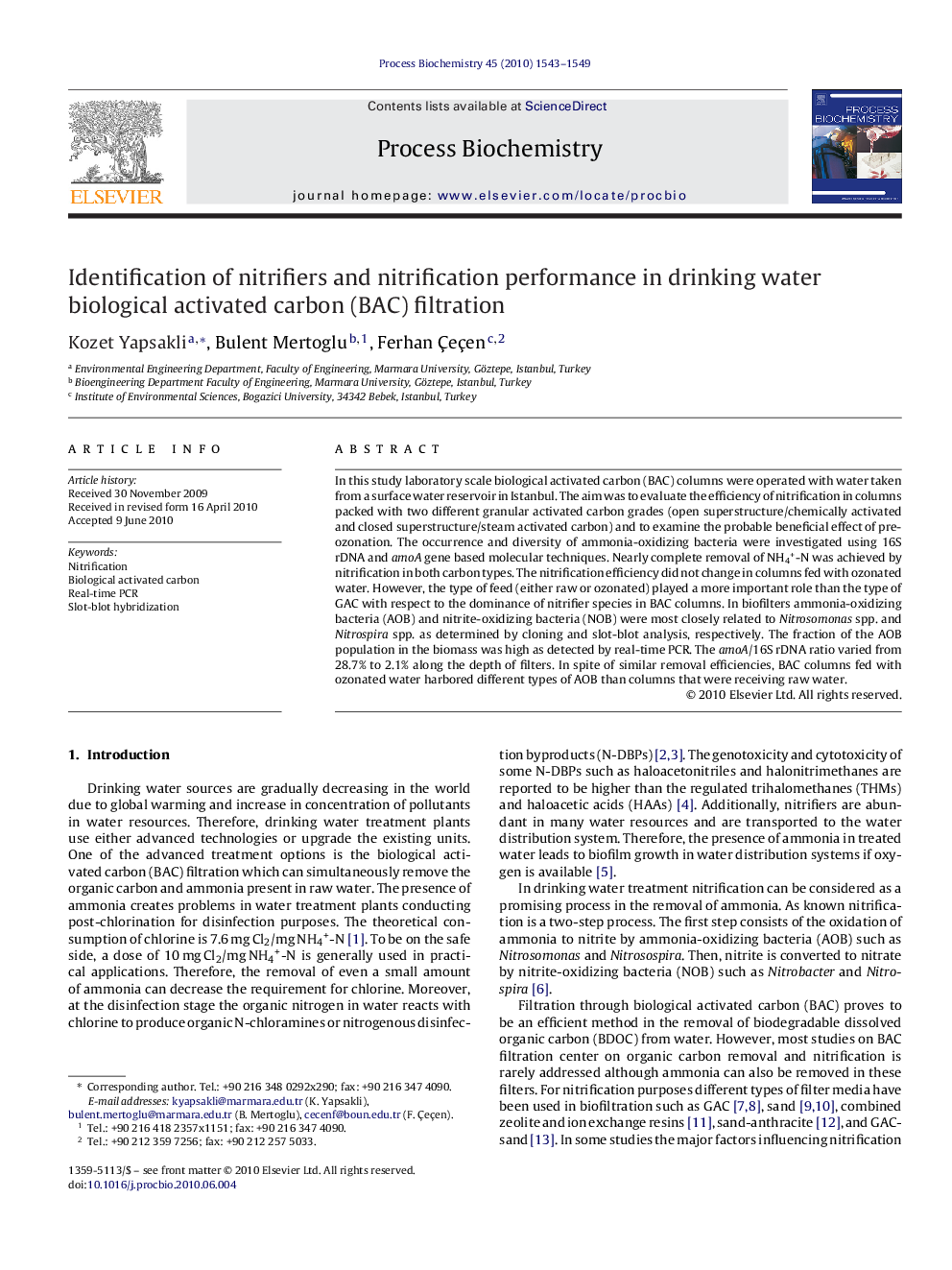| Article ID | Journal | Published Year | Pages | File Type |
|---|---|---|---|---|
| 34976 | Process Biochemistry | 2010 | 7 Pages |
In this study laboratory scale biological activated carbon (BAC) columns were operated with water taken from a surface water reservoir in Istanbul. The aim was to evaluate the efficiency of nitrification in columns packed with two different granular activated carbon grades (open superstructure/chemically activated and closed superstructure/steam activated carbon) and to examine the probable beneficial effect of pre-ozonation. The occurrence and diversity of ammonia-oxidizing bacteria were investigated using 16S rDNA and amoA gene based molecular techniques. Nearly complete removal of NH4+-N was achieved by nitrification in both carbon types. The nitrification efficiency did not change in columns fed with ozonated water. However, the type of feed (either raw or ozonated) played a more important role than the type of GAC with respect to the dominance of nitrifier species in BAC columns. In biofilters ammonia-oxidizing bacteria (AOB) and nitrite-oxidizing bacteria (NOB) were most closely related to Nitrosomonas spp. and Nitrospira spp. as determined by cloning and slot-blot analysis, respectively. The fraction of the AOB population in the biomass was high as detected by real-time PCR. The amoA/16S rDNA ratio varied from 28.7% to 2.1% along the depth of filters. In spite of similar removal efficiencies, BAC columns fed with ozonated water harbored different types of AOB than columns that were receiving raw water.
